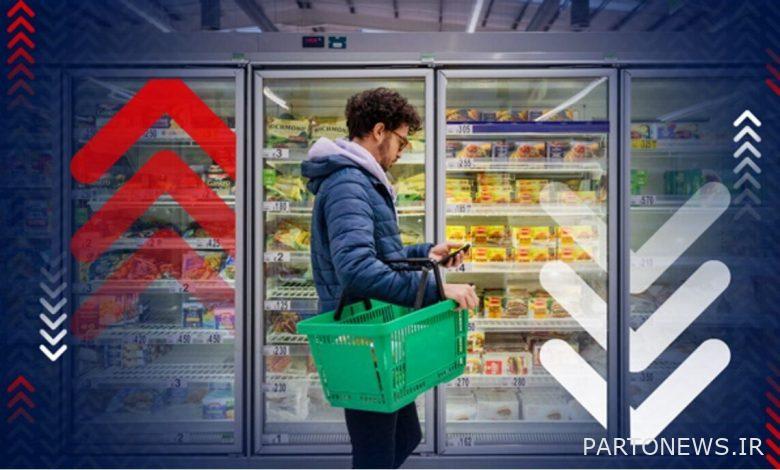The crisis of food shortages and high prices in the world’s largest food importer

Russia’s invasion of Ukraine has had a negative impact on global food security, IRNA reported, citing Agri Business. The food security of Middle Eastern countries, which were not in a good position before the Ukraine war, has worsened since the war.
In Egypt, where bread is one of the main foods, 80% of wheat imported from Russia and Ukraine is supplied. In 2020, the country imported 8.2 million tons of grain from Russia. With the Russian invasion of Ukraine, the price of grain in Egypt has skyrocketed, making it difficult for Egyptian consumers to get the grain they need.
Egypt is not the only country that has such problems. The challenge of food insecurity is growing across the Middle East, the world’s largest food importer. On average, more than 50% of the food consumed in the Middle East is imported. In some countries, such as the UAE, 90% of people’s food needs are met through imports.
Statistics from the World Bank show that in 2020, up to 20% of the world’s population living in food insecurity lived in the region. Only 6% of the world’s population lives in this region. In addition, more than 55 million of the Middle East’s 456 million people are malnourished. The situation of malnutrition is dire, especially in countries like Syria and Yemen.
“We are deeply concerned about the millions of people in the region who are struggling with food shortages for reasons such as war and climate change and the spread of the corona,” said Corinne Fleischer, director of the World Food Program in the Middle East.
According to him, the war in Ukraine has added to the problems of the region, which is heavily dependent on food imports, and as a result, the prices of wheat flour and vegetable oil, which are two important food items in the region, have risen. The price of edible oil has risen by 36 percent in Yemen and 39 percent in Syria in recent months. Wheat flour prices rose 47 percent in Lebanon and 15 percent in Libya.
“Middle Eastern countries are facing a food crisis, which has resulted in increased food prices and popular discontent,” said the director of a food company in the Middle East. These countries must do something to improve their food security as soon as possible.
According to him, due to high population growth and limited soil and water resources, the region’s dependence on food imports will continue to increase unless regional governments take steps to ensure food security for their people and ensure sustainable food production and supply domestically. .
Initiatives to solve problems
It is increasingly important for the countries of the region to learn new and modern methods of plant cultivation and to implement modern initiatives and technologies to have a sustainable agriculture and increase farmers’ incomes, as well as increase their food security.
Such an approach is essential for the Middle East; An area where less than a quarter of agricultural land is covered. Most of the land in this area is arid and semi-arid. In addition, while the region’s agriculture is largely dependent on rainwater, rainfall in the region is very low and the amount of rainfall has decreased in recent years.
Researchers predict that as the climate warms, the Middle East will become drier in the coming years, with less rainfall and more unpredictable rainfall. In addition, unusual weather events such as floods will increase and due to soil degradation, a large part of the agricultural lands of the region will no longer be suitable for cultivation.
Mohammad Tazrouti, an environmental activist, said the severe drought would force small farmers in the area to turn to irrigation, chemical fertilizers and pesticides more than ever before.
The share of agriculture in the region’s economy varies from country to country. In Morocco, for example, agriculture accounts for 12 percent of the economy and 33 percent of employment, and for Egypt it is 11 percent and 21 percent, respectively.
The average share of agriculture in the total economy of the region is 13%, and a quarter of the people in the Middle East make a living from agriculture.
Statistics show that by 2021, more than $ 18.4 billion worth of chemicals will be consumed in the Middle East agricultural sector, and this figure is projected to grow by 2.8% year-on-year to $ 21 billion over the next five years.
The use of chemicals in the agricultural sector varies from country to country. Egypt, Morocco, Algeria and Tunisia are the largest consumers of these substances in North Africa, and in West Asia Jordan, Iran and Bahrain use the most chemicals.
Micro-agriculture is the mainstay of food production in the Middle East. Small farmers with small plots of land are very vulnerable to the effects of climate change, pests, diseases and the like. Low productivity and increasing reduction of production due to lack of access to raw materials are also characteristics of this type of agriculture.
Experts say pests can destroy 40 percent of the crop if left unchecked, but climate change such as droughts could destroy 100 percent of production if not accompanied by our initiatives.
Drought has exacerbated the problem of pests and crop diseases in the region. In response to this problem, the chemical industry, such as pesticides, has grown well in the region. Leading companies producing pesticides and biotechnology products from all over the world have come to the region to not only protect their products but also to increase their health and sustainable production.
Due to water scarcity, farmers in the area should use minimal irrigation and farming systems. The use of drip irrigation has become common and this means that the soil can be kept moist with minimal water consumption.
Due to water scarcity, farmers have turned to crops that require less water. Weed control is very important in this situation and farmers should not resist the use of herbicides. Weed control is especially important in cereal and potato fields. Of course, many smallholder farmers do not have the capital to buy these materials. Despite the existence of domestic companies producing pesticides, an important part of the region’s need for these substances is met from abroad.

